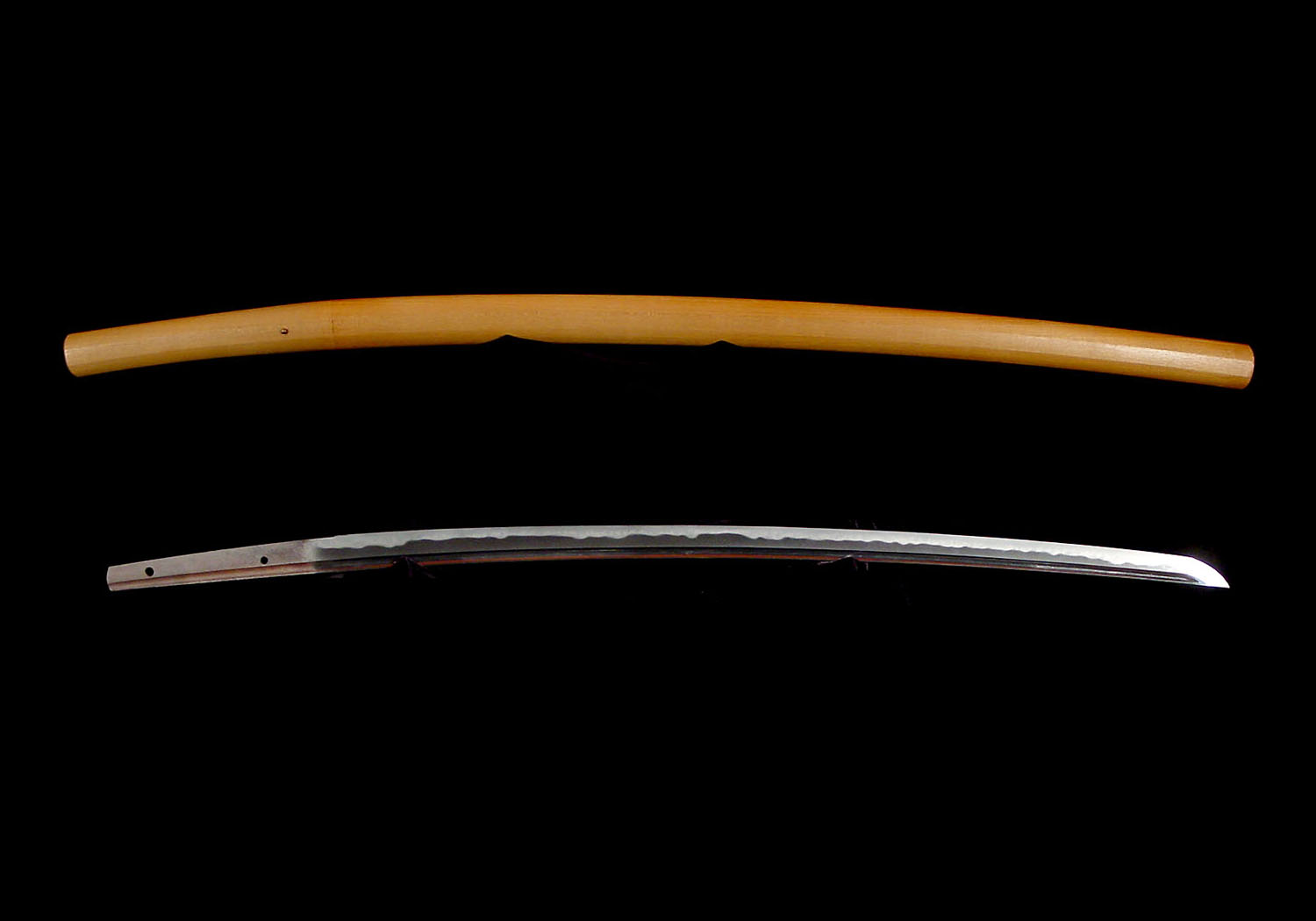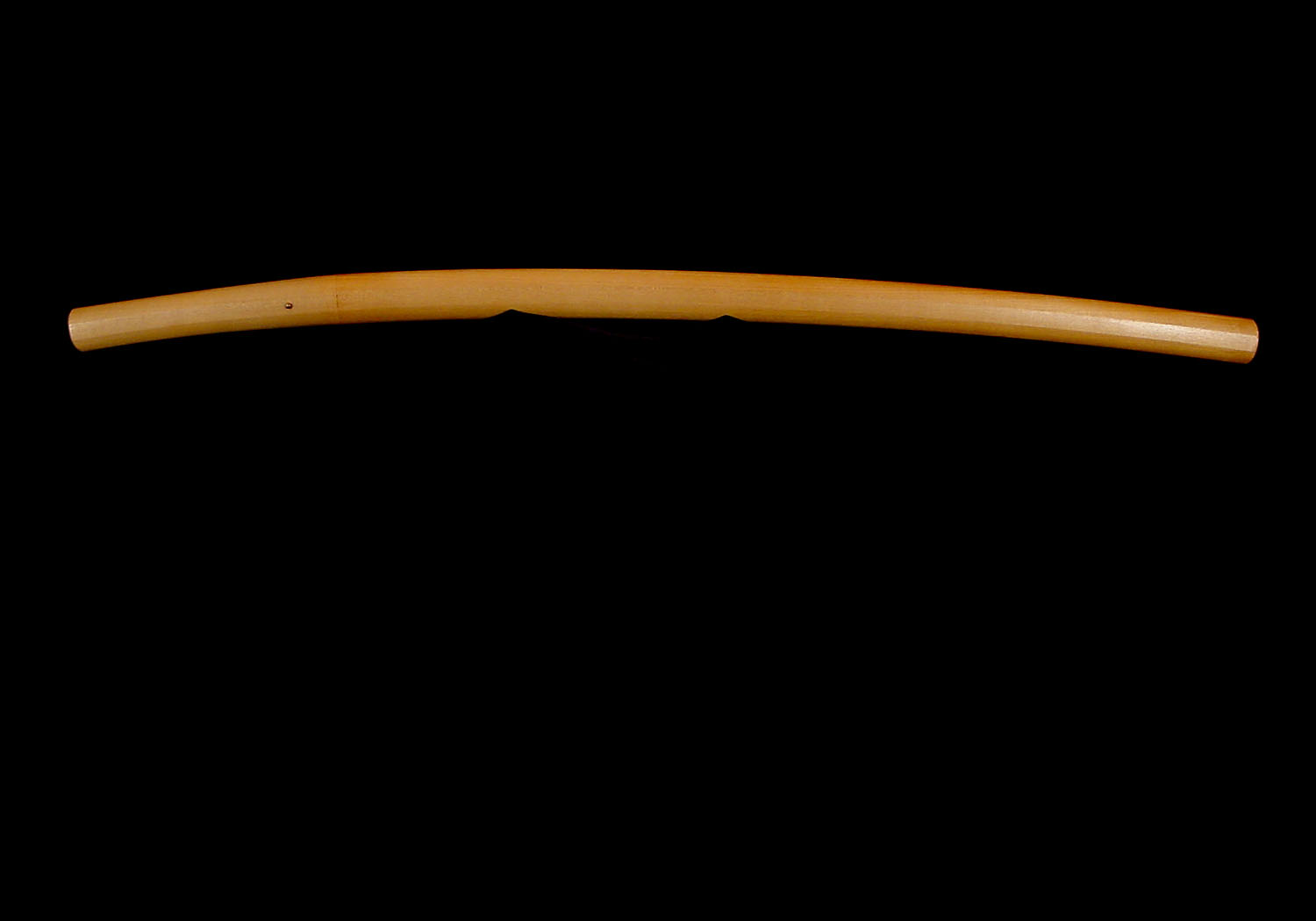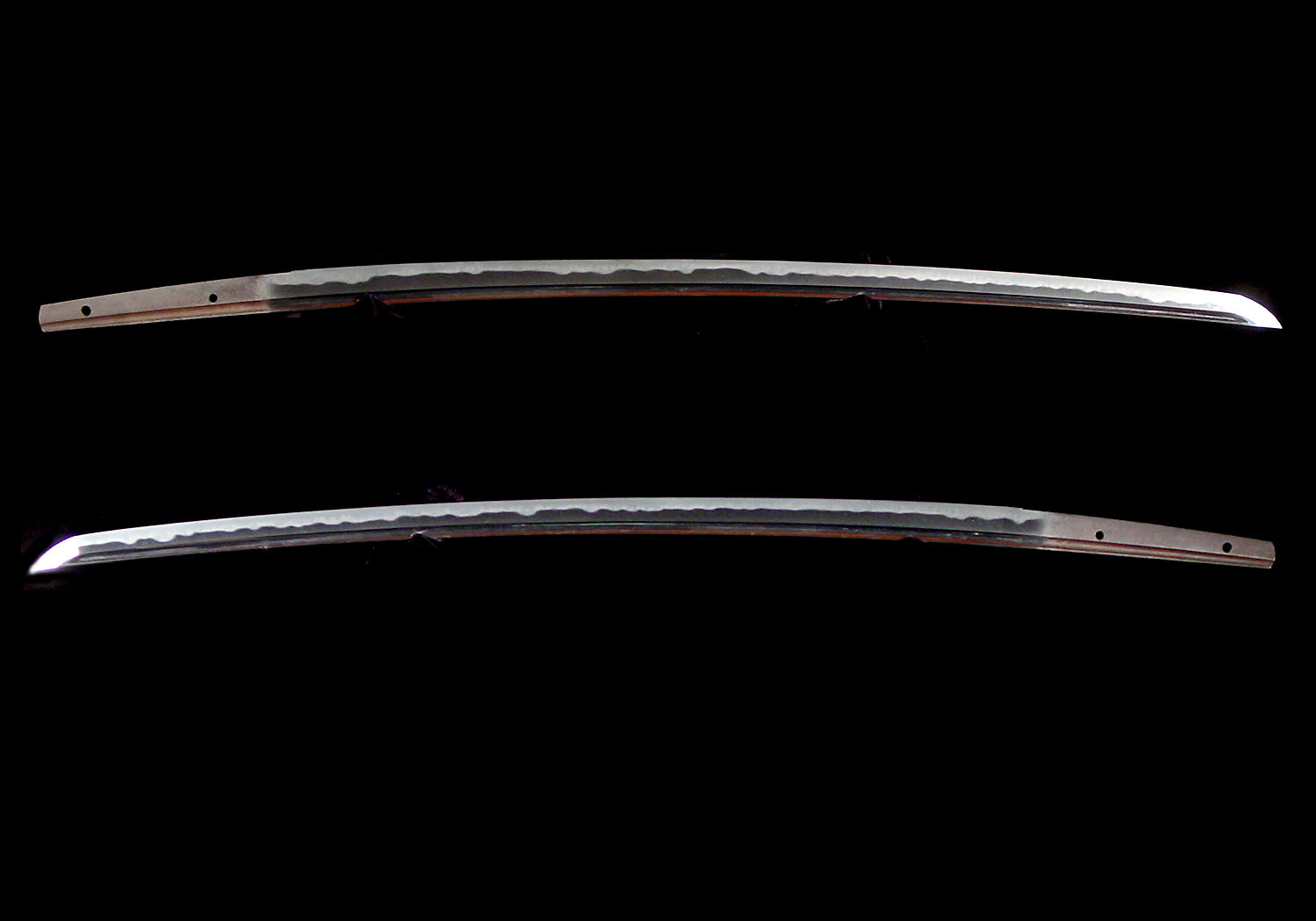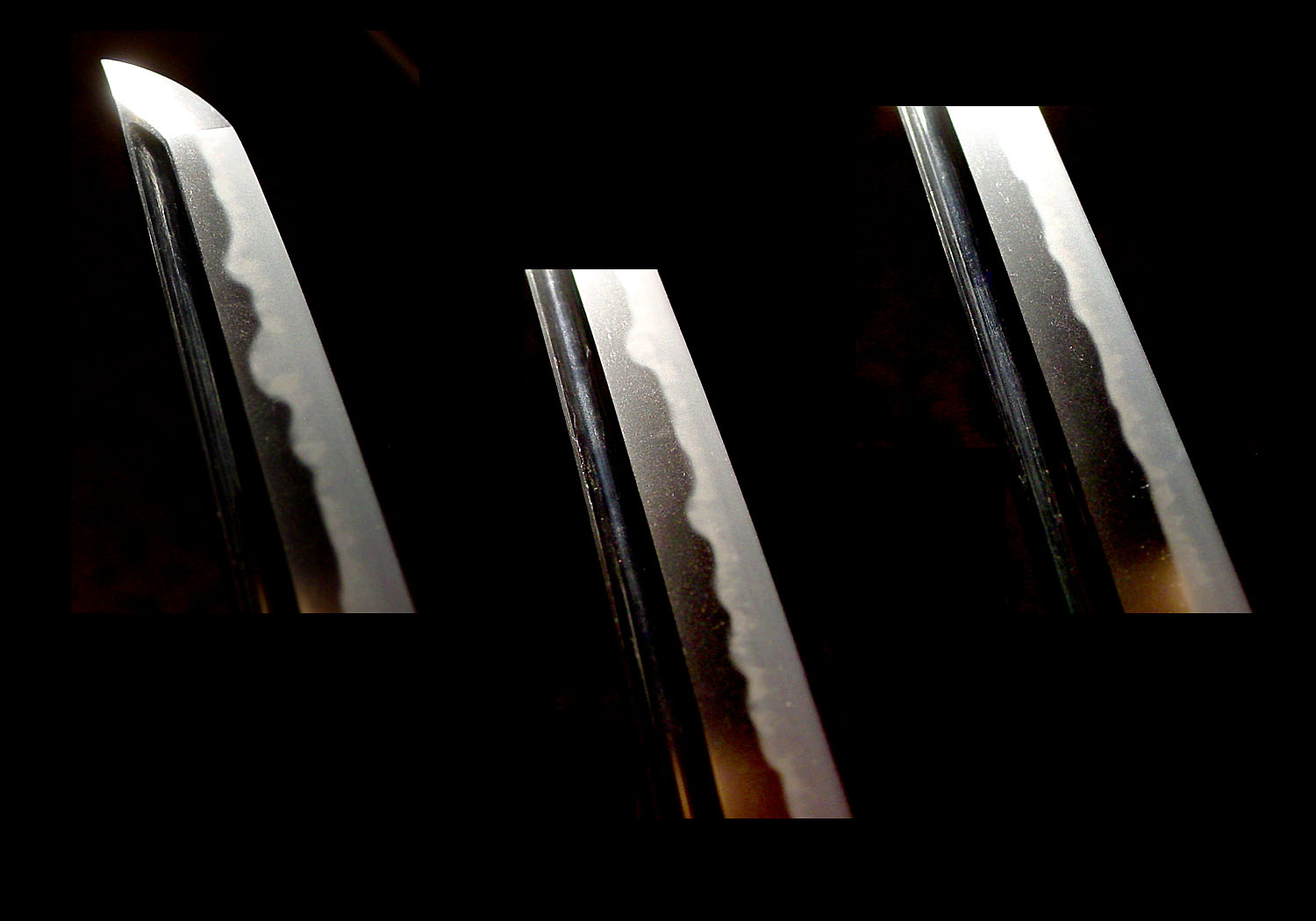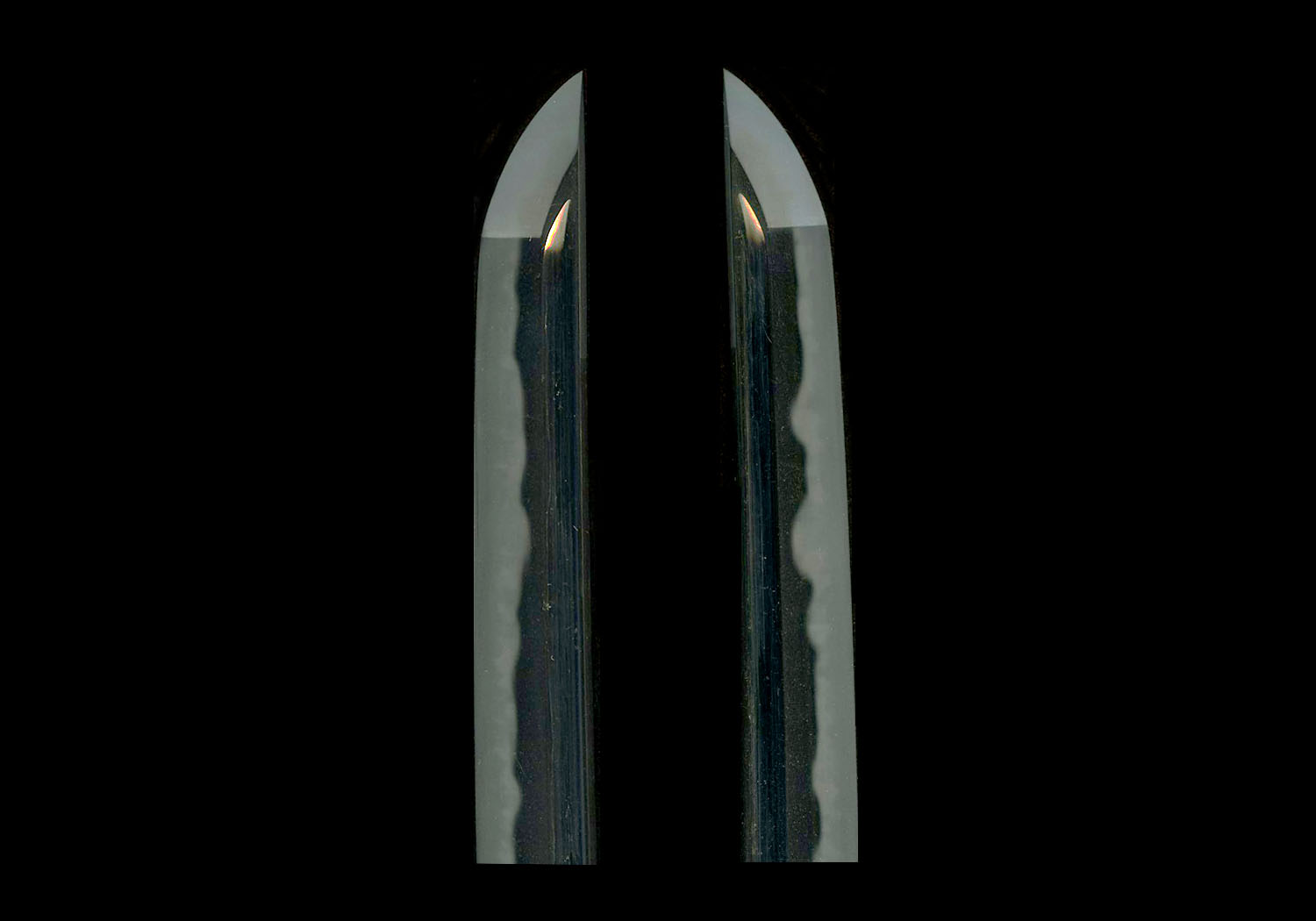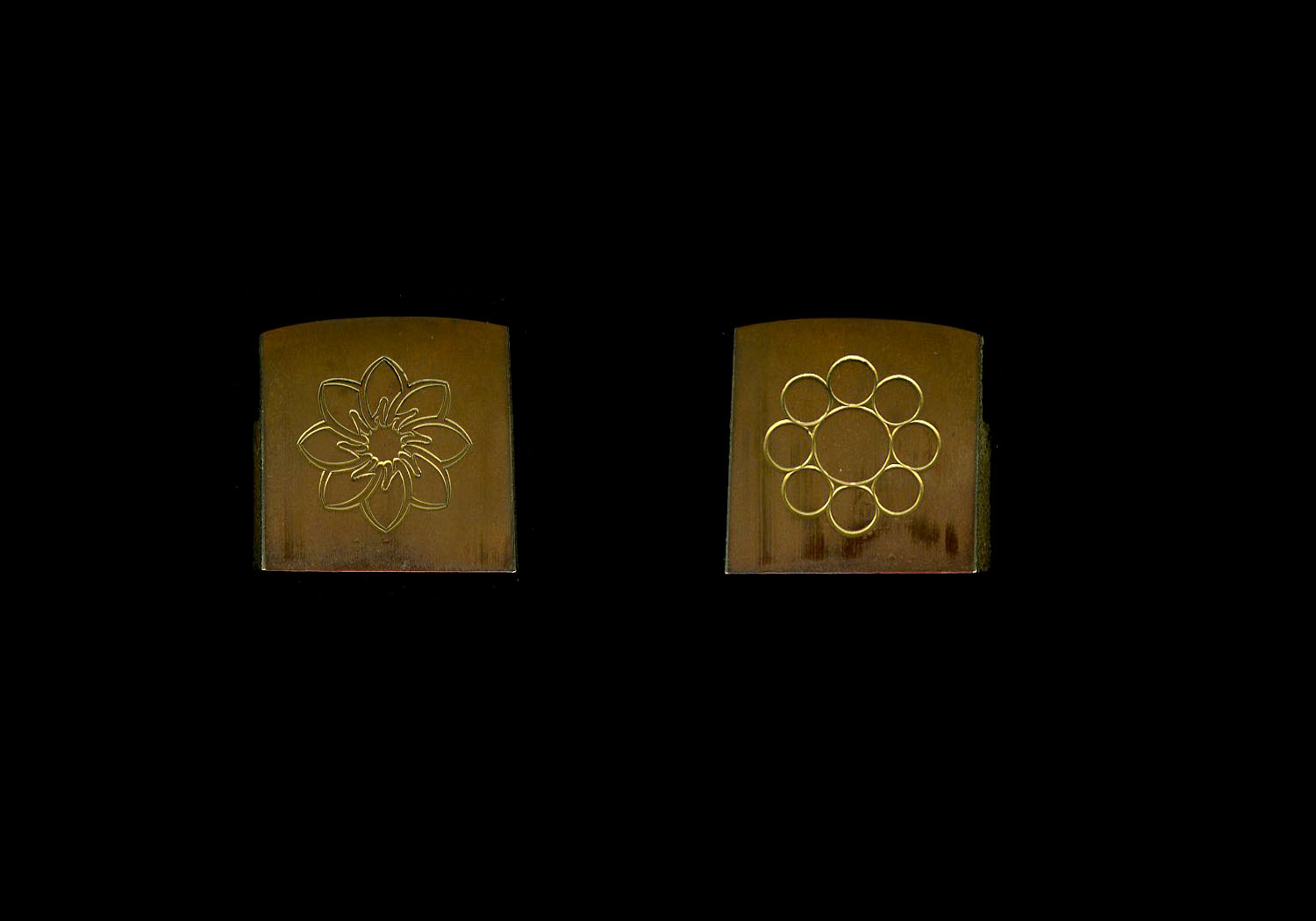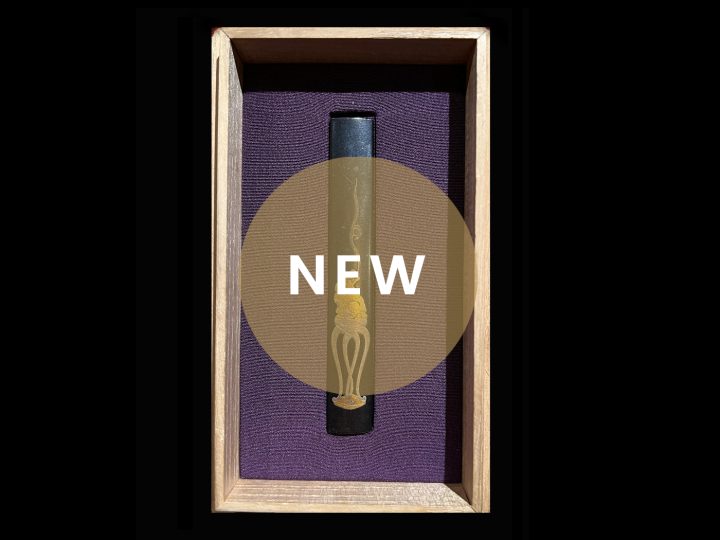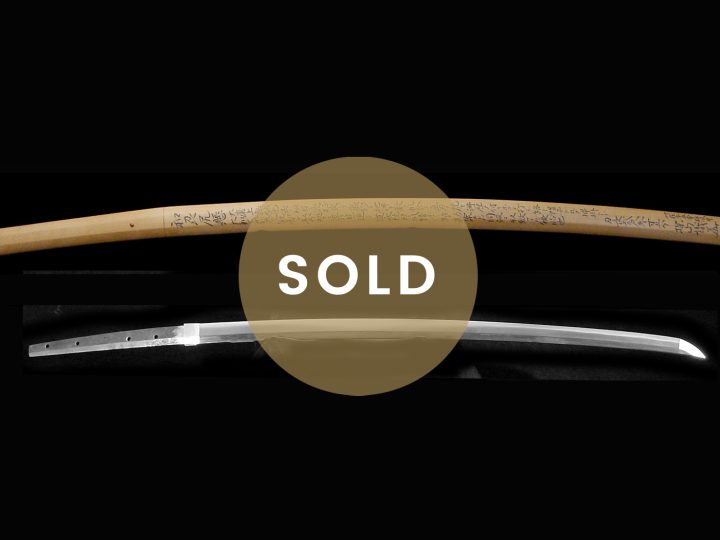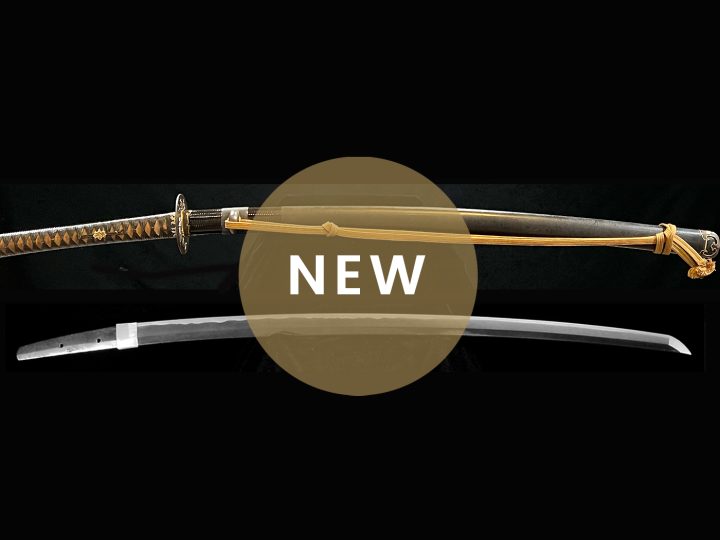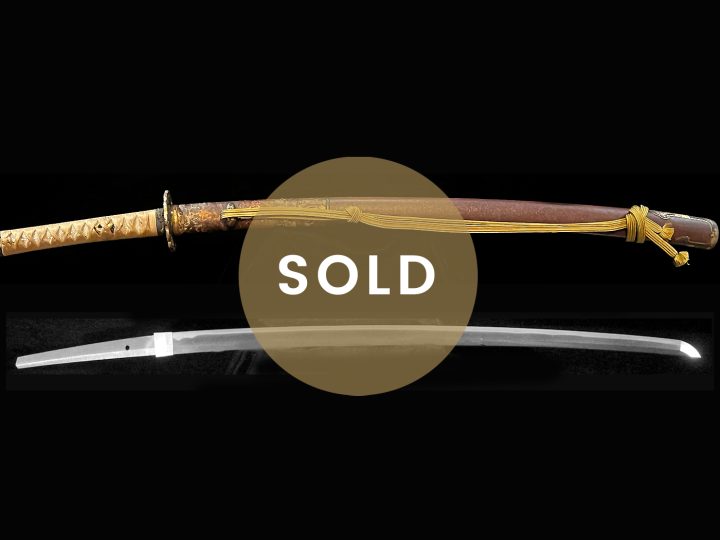
The Ichimonji School (一文字)in Bizen Province was a large school that was founded in the beginning of the Kamakura period and lasted through the Nanbokucho period. From the beginning of the Kamakura period and up until the middle of the Kamakura period, works by this school are commonly referred to as Ko-Ichimonji (古一文字) works. From the beginning of the Kamakura period and through the middle of the Kamakura period, the center of the production done by this school was located in the area called Fukuoka (福岡). From the end of the Kamakura period and through the early part of the Nanbokucho period, the center of production moved to Yoshioka (吉岡). Around the Shochu era (1324-1326) another branch of the Ichimonji school sprang up in Iwato (岩戸) in Bizen. This branch is called the Iwato Ichimonji (岩戸一文字). Since it was most active around the Shochu (正中) era, it is also called the Shochu Ichimonji school (正中一文字). Around 1225 Norifusa is said to have founded Katayama Ichimonji school (片山一文字)when he moved to Katayama from Fukuoka.
The name of the school is derived from the fact that many of the swords extant today are signed only with the kanji character “Ichi” (一). To this day there is uncertainty as to whether any of the smiths who signed with individual names are one and the same as any of these practically anonymous artisans who signed with only an “Ichi” (一).
According to Tanobe Sensei, formally a director of the NBTHK in Japan, this particular sword was made around the end of the Ko-Ichimonji period and the beginning of the Fukuoka Ichimonji period. For that reason it shows forging characteristics of both sub schools of the Ichimonji school. Also for that reason the NBTHK classified it as Ichimonji without pinning it down to one sub-school or the other. This fact makes this sword a specially important one and a very valuable study piece.
This is a truly outstanding blade that exhibits all of the traits expected with this school. There is very beautiful utsuri that is, to say the least, breathtaking. The overall condition of the blade is excellent with no flaws or weaknesses. It is in a superb polish that shows all of its many attributes.
The Jûyô Tôken zufu certificate is translated as follows:
Jūyō-tōken at the 38th Jūyō shinsa held on October 30, 1992
Katana, mumei: Ichimonji (一文字)
DIMENSIONS:
Nagasa 71.2 cm; Sori 1.6 cm; Motohaba 2.9 cm; Sakihaba 2.0 cm; Kissaki-nagasa 3.2 cm; Nakago-nagasa 18.4 cm, only very little nakago-sori
DESCRIPTION:
Keijo: Shinogi-zukuri, iori-mune, relatively wide mihaba, relatively deep sori, chū-kissaki.
Kitae: Itame that is mixed with mokume and that features ji-nie and a prominent midare-utsuri.
Hamon: Chōji-midare in ko-nie-deki with a wide nioiguchi that is mixed with gunome, plenty of ashi and yō, and some kinsuji in places.
Bōshi: Notare with a slightly rounded kaeri.
Nakago: Ō-suriage, kurijiri, katte-sagari yasurime, two mekugi-ana, mumei.
EXPLANATION:
The Ichimonji School flourished from the early Kamakura to the Nanbokuchō period in Fukuoka (福岡),Yoshioka (吉岡),Katayama (片山),Iwato (岩戸),and other places within Bizen province. The school gave rise to many great master smiths and the name goes back to the fact that some of them just signed with the character for Ichi( 一). However, there were also Ichimonji smiths who signed with an individual name under the Ichi character and some who signed with their name but without the character for Ichi. The most flamboyant workmanship of the school was displayed via a highly varied ō-choji-midare by the mid-Kamakura period Fukuoka-Ichimonji School.
Although this blade is ōsuriage mumei, it can be attributed to an Ichimonji work of the mid-Kamakura period. It is of a powerful shape and shows a textbook Ichimonji interpretation in flamboyant chōji-midare with a prominent utsuri. In addition, the ji and the ha of the blade are in excellent condition.

